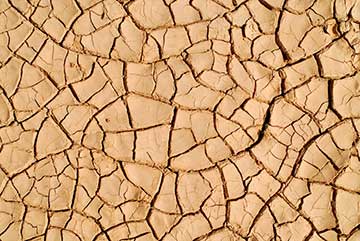The 2003 Western European heatwave broke temperature records all across Europe, with temperatures reaching 48°C in parts of Portugal and consistently over 40°C in cities like Paris.
When scientists all over the world were still in the process of understanding the causes behind this historical episode, an even more dramatic one occurred: the 2010 Russian heatwave.
These events – often referred to as the two mega-heatwaves – were far outside the temperature range that had ever been experienced locally, leading to unprecedented consequences for agriculture, ecology and human health.
New research by Dr Diego G. Miralles from Bristol's School of Geographical Sciences, (currently at Ghent University, Belgium), and colleagues from Wageningen University in The Netherlands and Max Plank Institute Hamburg, Germany, now adds a new piece to the puzzle.
Their study unravels how the progressive drying of the soils, and the heat-preserving structure of the atmospheric boundary layer (the layer between Earth’s surface and free atmosphere) affect the escalation of extreme mega-heatwave temperatures .
While the research emphasizes the requirement of anticyclonic conditions and warm winds, these large-scale conditions do not appear sufficient on their own to explain the high temperatures recorded during 2003 in Paris or 2010 in Moscow.
Based on the analysis of balloon soundings, satellite observations and atmospheric models, the new study concludes that local interactions between the land surface and the atmospheric layer are also essential.
As soils dry out over the course of several days, the cooling by evaporation is progressively reduced, leading to the further warming of the soils and near-surface air.
The situation does not 'reset' at night; on the contrary, at night-time, the heat generated during the day is preserved in a deep atmospheric layer located several hundred meters above the surface. This warm air remains available to be engulfed again within the atmospheric boundary layer during the next diurnal period. As the heat accumulates day after day, the temperatures escalate progressively to extremely high values.
With droughts and heatwaves expected to intensify and become more frequent as global warming progresses, Dr Miralles and colleagues draw attention to the interaction between the drying of soils and warming of the atmosphere, how these two strengthen each other, and how this synergy may promote the occurrence of mega-heatwaves in the future.
Paper
'Mega-heatwave temperatures due to combined soil desiccation and atmospheric heat accumulation' by Diego G. Miralles, Adriaan J. Teuling, Chiel C. van Heerwaarden and Jordi Vilà-Guerau de Arellano in Nature Geoscience
